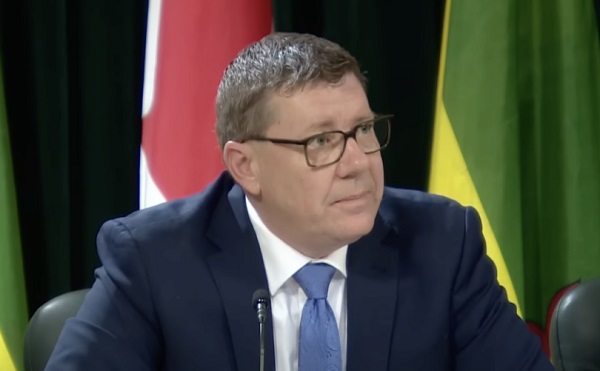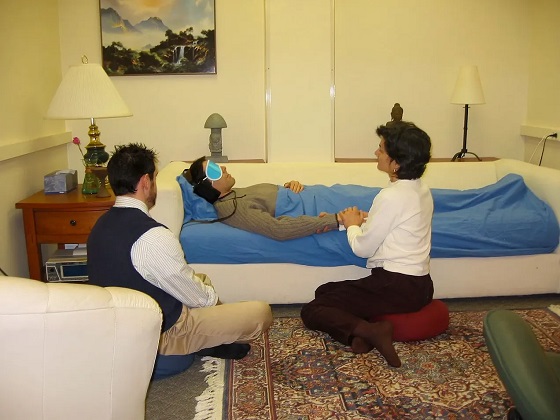Alberta
Book of poetry about healing journey. Proceeds shared with sexual assault centre

Submitted by the Central Alberta Sexual Assault Centre
She Was – Book of poetry speaks to healing journey
Local author releases book in support of CASASC
Local artist and mental health advocate Sabrina Samuel has released a book of poetry with a portion of proceeds supporting the Central Alberta Sexual Assault Support Centre (CASASC).
The book She Was is inspired by Samuel’s healing journey, with each poem telling the story of incredible women along the path.
“The work illustrates our dynamic power, but also our humanity,” said Samuel. “Women are multi-dimensional. My hope for the book is that it will be an agent for positive change, celebration, collaboration and discussion. I’m deeply grateful for the help I received from CASASC, so I wanted to partner with them.”
The launch of She Was coincides with Sexual Violence Awareness Month (SVAM) in the month of May and leads up to Mother’s Day.
Samuel said all art is a response to something.
“When you use metaphor to address pain, you can reach people differently,” she said. “I understand fully that racialized women are the most vulnerable to abuse, harassment and assault. I don’t want to be a statistic. This work has shown me I’m owning more of my story each day by drawing strength from my feminine influences.”
She Was is available for purchase in-person at Cheeky Couture’s Boutique on Gasoline Alley, Housewarmings in downtown Red Deer, at the CASASC main office or by emailing [email protected]
Copies are $20 each with 50 per cent of the proceeds supporting CASASC. A $5 delivery fee will be charged to orders outside of Red Deer.
She Was has been selected by Lloydminster and Vermillion for Equity’s Monthly Book Club for May 2 at 2 p.m. Samuel will also be a guest on Coffee Chat with CASASC on May 6 at 10:30 a.m. on CASASC’s Instagram page (@CASASC3).
Samuel is hosting the She Was Author’s Launch on Friday, April 30 at 7 p.m. via Zoom. The launch will feature a reading, input from other readers, a Q & A segment, door prizes and giveaways.
For more information about She Was visit facebook.com/surrenderliving or www.surrenderliving.com
Readers are encouraged to participate in the She Was challenge by selecting a poem from the book and recording themselves reading it on Facebook or Instagram. Dedicate the post to a great woman and tag them to do the same. Tag @surrenderliving and use the hashtag #shewas to be entered into the challenge. The winner will be selected at the end of SVAM.
Join the conversation for the month by using the hashtag #SVAM for Sexual Violence Awareness Month. Help us eliminate sexual violence in our community by creating a culture of respect.
CASASC is a voluntary, non-profit organization serving the Central Alberta region under the direction of a community-based Board of Directors. CASASC educates, supports and empowers individuals, families and communities regarding all aspects of sexual violence.
Alberta
Big win for Alberta and Canada: Statement from Premier Smith

Premier Danielle Smith issued the following statement on the April 2, 2025 U.S. tariff announcement:
“Today was an important win for Canada and Alberta, as it appears the United States has decided to uphold the majority of the free trade agreement (CUSMA) between our two nations. It also appears this will continue to be the case until after the Canadian federal election has concluded and the newly elected Canadian government is able to renegotiate CUSMA with the U.S. administration.
“This is precisely what I have been advocating for from the U.S. administration for months.
“It means that the majority of goods sold into the United States from Canada will have no tariffs applied to them, including zero per cent tariffs on energy, minerals, agricultural products, uranium, seafood, potash and host of other Canadian goods.
“There is still work to be done, of course. Unfortunately, tariffs previously announced by the United States on Canadian automobiles, steel and aluminum have not been removed. The efforts of premiers and the federal government should therefore shift towards removing or significantly reducing these remaining tariffs as we go forward and ensuring affected workers across Canada are generously supported until the situation is resolved.
“I again call on all involved in our national advocacy efforts to focus on diplomacy and persuasion while avoiding unnecessary escalation. Clearly, this strategy has been the most effective to this point.
“As it appears the worst of this tariff dispute is behind us (though there is still work to be done), it is my sincere hope that we, as Canadians, can abandon the disastrous policies that have made Canada vulnerable to and overly dependent on the United States, fast-track national resource corridors, get out of the way of provincial resource development and turn our country into an independent economic juggernaut and energy superpower.”
Alberta
Energy sector will fuel Alberta economy and Canada’s exports for many years to come

From the Fraser Institute
By any measure, Alberta is an energy powerhouse—within Canada, but also on a global scale. In 2023, it produced 85 per cent of Canada’s oil and three-fifths of the country’s natural gas. Most of Canada’s oil reserves are in Alberta, along with a majority of natural gas reserves. Alberta is the beating heart of the Canadian energy economy. And energy, in turn, accounts for one-quarter of Canada’s international exports.
Consider some key facts about the province’s energy landscape, as noted in the Alberta Energy Regulator’s (AER) 2023 annual report. Oil and natural gas production continued to rise (on a volume basis) in 2023, on the heels of steady increases over the preceding half decade. However, the dollar value of Alberta’s oil and gas production fell in 2023, as the surging prices recorded in 2022 following Russia’s invasion of Ukraine retreated. Capital spending in the province’s energy sector reached $30 billion in 2023, making it the leading driver of private-sector investment. And completion of the Trans Mountain pipeline expansion project has opened new offshore export avenues for Canada’s oil industry and should boost Alberta’s energy production and exports going forward.
In a world striving to address climate change, Alberta’s hydrocarbon-heavy energy sector faces challenges. At some point, the world may start to consume less oil and, later, less natural gas (in absolute terms). But such “peak” consumption hasn’t arrived yet, nor does it appear imminent. While the demand for certain refined petroleum products is trending down in some advanced economies, particularly in Europe, we should take a broader global perspective when assessing energy demand and supply trends.
Looking at the worldwide picture, Goldman Sachs’ 2024 global energy forecast predicts that “oil usage will increase through 2034” thanks to strong demand in emerging markets and growing production of petrochemicals that depend on oil as the principal feedstock. Global demand for natural gas (including LNG) will also continue to increase, particularly since natural gas is the least carbon-intensive fossil fuel and more of it is being traded in the form of liquefied natural gas (LNG).
Against this backdrop, there are reasons to be optimistic about the prospects for Alberta’s energy sector, particularly if the federal government dials back some of the economically destructive energy and climate policies adopted by the last government. According to the AER’s “base case” forecast, overall energy output will expand over the next 10 years. Oilsands output is projected to grow modestly; natural gas production will also rise, in part due to greater demand for Alberta’s upstream gas from LNG operators in British Columbia.
The AER’s forecast also points to a positive trajectory for capital spending across the province’s energy sector. The agency sees annual investment rising from almost $30 billion to $40 billion by 2033. Most of this takes place in the oil and gas industry, but “emerging” energy resources and projects aimed at climate mitigation are expected to represent a bigger slice of energy-related capital spending going forward.
Like many other oil and gas producing jurisdictions, Alberta must navigate the bumpy journey to a lower-carbon future. But the world is set to remain dependent on fossil fuels for decades to come. This suggests the energy sector will continue to underpin not only the Alberta economy but also Canada’s export portfolio for the foreseeable future.
-

 2025 Federal Election2 days ago
2025 Federal Election2 days agoMark Carney refuses to clarify 2022 remarks accusing the Freedom Convoy of ‘sedition’
-

 Business2 days ago
Business2 days agoSaskatchewan becomes first Canadian province to fully eliminate carbon tax
-

 2025 Federal Election2 days ago
2025 Federal Election2 days agoLiberal MP Paul Chiang Resigns Without Naming the Real Threat—The CCP
-

 2025 Federal Election2 days ago
2025 Federal Election2 days agoPM Carney’s Candidate Paul Chiang Steps Down After RCMP Confirms Probe Into “Bounty” Comments
-

 Alberta1 day ago
Alberta1 day agoOwner sells gas for 80 cents per litre to show Albertans how low prices ‘could’ be
-

 Automotive2 days ago
Automotive2 days agoElectric cars just another poor climate policy
-

 International1 day ago
International1 day agoTrump’s ‘Golden Dome’ defense shield must be built now, Lt. Gen. warns
-

 Break The Needle20 hours ago
Break The Needle20 hours agoWhy psychedelic therapy is stuck in the waiting room






